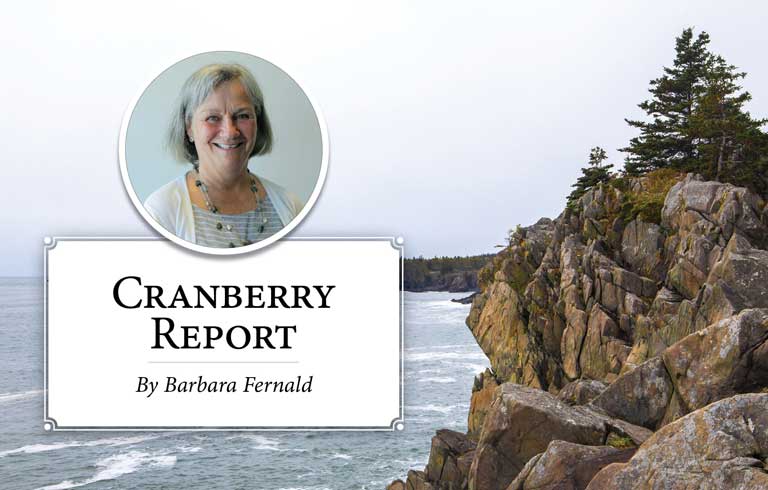My husband, Bruce, launched his lobster boat at the end of March and was setting traps by the first week of April. He spent the winter painting buoys, repairing old traps, and building new ones.
By the time he was ready to set out again, 600 of his 800 traps had passed through his hands. For each of Bruce’s 600 buoy lines (a.k.a. end lines), he had to follow the latest NOAA regulations for New England fisheries designed to prevent right whales from becoming entangled in lobster gear.
Fishermen were notified in early winter they had to install a new “weak link” in all their end lines by May 1. This could be done either by inserting a 3-inch piece of 5/16-inch rope (NOAA approved, with a 1,700-pound breaking point) halfway between the buoy and the trap, or by inserting a NOAA approved plastic link halfway down the end line. Bruce chose the rope option.
From the talk I’ve heard, these links are making many fishermen pretty nervous.
On the first day he hauled the freshly adapted gear, a number of the weak link ropes came up fuzzy and twisted, causing concern for how long this rope could be used before it broke and traps would be lost. (A new trap costs around $100 for the size Bruce uses.)
He took a picture of the rope that was gnarly after just ten days in the water and emailed Patrick Keliher, Marine Resources commissioner, and then stormed outside to his trailer, loaded with 60 traps he was planning to set the next day. Each end line had the weak rope link properly installed.
Each rope would have to be cut out and replaced with a plastic link before he would set them. As he left, Bruce said, “If the commissioner calls back, have him call me on my cell phone. I’ll be out here dealing with all of this #@&*!!”
From the talk I’ve heard, these links are making many fishermen pretty nervous.
Yes, they will fit through the hauler, but how long will they last before breaking? Does it stress the plastic to drag them through the hauler multiple times? Is there any truth to the rumor that a fisherman was injured when one of these links broke and the rope hit him in the eye? What if the trap or traps are hung up on the bottom? Will the weak link be rugged enough to get those traps to the surface?
Stay tuned because these measures are just now starting to be tested.
Maine lobster fishermen have been complying with “whale saving” regulations for over 20 years, at their own expense. First came the break-away swivels on their buoys and the request to remove all knots from their lines. Then all New England lobstermen were tasked with marking different sections of their end lines with red.
Then, in the first COVID winter, Maine lobstermen spent time taking out the red markings and putting in purple because someone at NOAA realized it might make sense to have different colored rope for each state to determine the origins of any entanglement. (Massachusetts got to keep the red markings)
The most costly adaptation, so far, was the 2009 regulation outlawing all floating rope that lobster fishermen use to connect traps to each other on the ocean floor. They had to replace it with “whale rope,” a neutrally buoyant rope that lasts about three years. The original floating rope would last for about 20 years, so the 2009 regulation caused a more recurring expense to fishermen.
We hope the latest weak links do not become an even more costly modification.
From the MaineLobstermen.org site, I learned that Maine lobster fishing is one of the last sustainable wild fisheries in the world. How much longer can they last when NOAA seems determined to hold Maine lobstermen accountable for right whale deaths they did not cause?
It would be terrible to see a way of life disappear from the islands just to try to save a whale that rarely, if ever, swims through here. Our island landscapes could drastically change and yet whales will still die from whatever it is that kills them while they are swimming in waters farther offshore.
There have been no right whale entanglements in Maine waters since one in 2004 and one in 2002. As far as is known, both of those whales survived and are still alive. Unless they got hit by a ship.
Barbara Fernald lives on Islesford (Little Cranberry Island). She may be reached at Fernald244@gmail.com.





